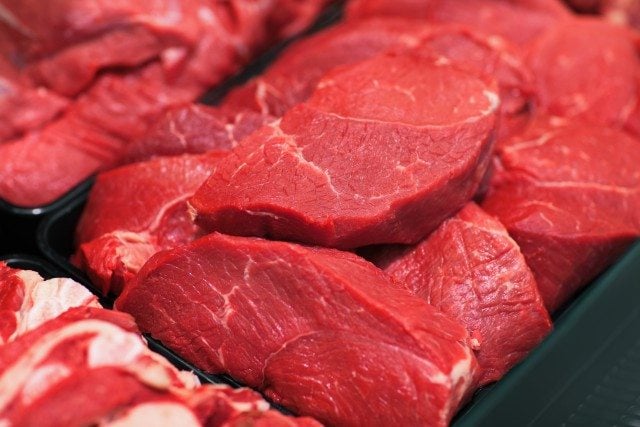Scientists at the Institute of Food Research on the Norwich Research Park have teamed up with Oxford Instruments to develop a fast, cheap alternative to DNA testing as a means of distinguishing horse meat from beef.
As horses and cattle have different digestive systems, the fat components of the two meats have different fatty acid compositions, as the team report in the journal Food Chemistry.
The new method looks at differences in the chemical composition of the fat in the meats, using similar technology to a hospital magnetic resonance imaging scanner.
In 10 minutes, a technician can determine whether a piece of raw meat is horse or beef.
The method, developed with funding from Innovate UK and the Biotechnology and Biological Sciences Research Council (BBSRC) has recently been trialed in an industrial setting by a meat processor.
It is currently being extended by the team of scientists to test for other meat species, including pork and lamb.
The horse meat scandal of 2013 was sparked by the discovery of horse meat in a number of beef burgers.
Soon, horse meat was detected in other meat products, leading to millions of pounds worth of food being taken off supermarket shelves.
The crisis exposed the potential vulnerability of the meat supply chain to fraud and even to threats to public health, and highlighted gaps in testing.
The currently favored method of meat species testing relies on DNA, which can tell one meat from another based on the genetic makeup of the source animals, but is relatively slow and expensive and prone to contamination if not used carefully.
In response to this, a new method using a totally different approach was developed by Oxford Instruments and IFR.
The key technology is the ‘Pulsar’, a high resolution bench-top nuclear magnetic resonance (NMR) spectrometer developed by Oxford Instruments.
NMR spectroscopy is a well-respected analytical technique used in chemistry labs worldwide.
However, conventional instruments are large and expensive, and rely on super-cooled magnets and highly trained personnel to run them.
Pulsar in designed based on permanent magnets and ease of operation.
For a test to be useful as a screening tool it needs to be quick and cheap.
With this goal in mind, the team discovered that a couple of minutes shaking about a gram of meat in a solvent followed by a few minutes of data acquisition on Pulsar was enough to tell horse meat from beef.
The software to carry out mathematical analysis of the spectral data has also been developed at IFR.
“It’s a stroke of luck really that some of the most important meats turn out to have fat signatures that we can tell apart so easily with this method”, says Dr Kate Kemsley.
“It’s been very satisfying to see results from a real industrial setting sit right on top of those we generated in our two labs.”
“We think this testing method should work well at key points in the supply chain, say at meat wholesalers and processors.”










